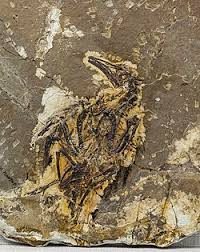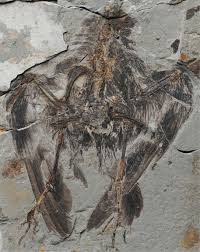In a groundbreaking discovery, scientists have unraveled the mysteries of dinosaur coloration by identifying the oldest known example of beta-keratin, a common red-orange pigment, in a 130-million-year-old bird feather fossil.

This significant finding opens the door to understanding the vibrant hues that adorned dinosaurs and early birds during the Early Cretaceous period.
The study focused on a fossilized feather from the extinct Eoconfuciusornis bird, retrieved from Early Cretaceous lake deposits in Hebei, northern China.

By applying immunogold, a staining technique used in electron microscopy, researchers successfully identified proteins, particularly the feather structural protein beta-keratin.
Dr. Pan Yanhong from the Nanjing Institute of Geology and Palaeontology, the corresponding author of the research paper, emphasized the importance of multiple independent analyses confirming the presence of beta-keratin.

This discovery provides compelling evidence for the existence of melanosomes, microbodies responsible for pigment production.
The breakthrough could revolutionize our ability to determine the true colors of other ancient birds and dinosaurs.

By examining the feather structure for pigment proteins, researchers may unravel the vibrant and diverse color palette that adorned these ancient creatures during the Early Cretaceous period.
The study, published in the journal Proceedings of the National Academy of Sciences, marks a crucial step forward in our quest to visualize and understand the colorful world of dinosaurs and early birds, providing insights into their evolutionary adaptations and ecological interactions.





